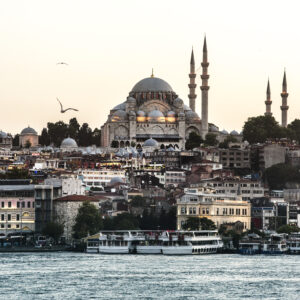Description
Familiarity with treatment
Aortic root surgery involves the surgical repair or replacement of the aortic root, which includes the aortic valve, the aortic annulus, and the portion of the aorta closest to the heart. Here are the key points to be familiar with regarding aortic root surgery:
- Indications:
- Aortic root surgery may be indicated for a variety of conditions, including aortic root aneurysm, aortic dissection involving the root, connective tissue disorders such as Marfan syndrome, and severe aortic valve disease in conjunction with root pathology.
- Surgical Techniques:
- Aortic root surgery can involve several techniques, including aortic root replacement with a prosthetic graft (Bentall procedure), valve-sparing root replacement (David procedure), and reimplantation of the aortic valve (Yacoub procedure), among others.
- Complexity:
- Aortic root surgery is considered a complex and intricate procedure due to the involvement of critical structures near the heart and the need for precise surgical techniques to preserve valvular and aortic function.
- Multidisciplinary Approach:
- Aortic root surgery often requires a multidisciplinary team approach, involving cardiac surgeons, cardiologists, anesthesiologists, and other specialists, to ensure comprehensive preoperative evaluation, surgical planning, and postoperative care.
- Risk and Benefits:
- The risks and benefits of aortic root surgery, including the potential for valvular function preservation, prevention of aortic complications, and long-term durability of surgical interventions, need to be carefully considered in the context of each patient’s clinical situation.
- Postoperative Care:
- Postoperative care following aortic root surgery involves similar principles to aortic valve surgery, including intensive care unit monitoring, pain management, monitoring for complications, medication management, wound care, and long-term surveillance.
- Long-Term Follow-Up:
- Long-term follow-up is essential for patients who undergo aortic root surgery to monitor the integrity of the surgical repair or replacement, assess cardiac function, and address any potential long-term complications or concerns.
- Advancements in Minimally Invasive Approaches:
- Advancements in surgical techniques have led to the development of minimally invasive approaches to aortic root surgery, offering the potential for reduced operative trauma, shorter recovery times, and improved cosmetic outcomes.
Who is it suitable for?
Aortic root surgery is suitable for individuals who have specific cardiac conditions involving the aortic root and its associated structures. The decision to pursue aortic root surgery is based on a thorough evaluation of the patient’s clinical condition, the severity of their cardiac pathology, and the potential benefits of surgical intervention. Here are the general categories of patients for whom aortic root surgery may be suitable:
- Aortic Root Aneurysm:
- Patients with an aortic root aneurysm, particularly those at risk of rupture or dissection, may be candidates for aortic root surgery to address the aneurysmal dilation and prevent life-threatening complications.
- Aortic Dissection Involving the Aortic Root:
- Individuals with aortic dissection that involves the aortic root, leading to compromised valvular function or structural instability, may require aortic root surgery to repair or replace the affected segments of the aorta and aortic valve.
- Connective Tissue Disorders:
- Patients with connective tissue disorders such as Marfan syndrome, Ehlers-Danlos syndrome, or Loeys-Dietz syndrome, which predispose them to aortic root pathology and dissection, may be candidates for aortic root surgery to address the underlying structural weaknesses.
- Severe Aortic Valve Disease with Root Involvement:
- Individuals with severe aortic valve disease, such as aortic stenosis or regurgitation, in the setting of concurrent aortic root pathology (e.g., dilation, dissection) may require aortic root surgery to address both the valvular and root components of their condition.
- Genetic Predisposition:
- Patients with a family history of aortic root pathology or genetic predisposition to aortic aneurysms and dissections may be considered for aortic root surgery to mitigate their risk of developing life-threatening cardiovascular complications.
- Failed Previous Aortic Valve Surgery:
- Individuals who have undergone previous aortic valve surgery and subsequently develop complications involving the aortic root or aortic valve prosthesis may require aortic root surgery as a revision procedure to address the recurrent pathology.
- Valve-Sparing Procedures:
- For patients who are suitable candidates for valve-sparing root replacement (e.g., David procedure), aortic root surgery may be indicated to preserve the native aortic valve while addressing the underlying root pathology.
- Complex Aortic Pathologies:
- Patients with complex aortic pathologies, such as combined involvement of the aortic root, ascending aorta, and aortic arch, may require comprehensive aortic surgery, including aortic root procedures, to address the full extent of their cardiovascular condition.
Who is it not suitable for?
Aortic root surgery may not be suitable for certain individuals based on their specific clinical circumstances and overall health. While the decision regarding the appropriateness of aortic root surgery is highly individualized and should be made in consultation with a multidisciplinary team of healthcare providers, there are general scenarios in which aortic root surgery may not be recommended. Here are some considerations for when aortic root surgery may not be suitable:
- High Surgical Risk:
- Patients who are deemed to be at unacceptably high surgical risk, such as those with severe comorbidities, advanced age, or significant frailty, may not be suitable candidates for aortic root surgery due to the potential for prohibitive perioperative risks.
- Limited Life Expectancy and Functional Status:
- Individuals with limited life expectancy or significantly compromised functional status, where the potential benefits of aortic root surgery may be outweighed by the burdens of the procedure and postoperative recovery, may not be appropriate candidates for this surgical intervention.
- Patient Preference and Values:
- Patients who express strong preferences against undergoing surgical interventions, including aortic root surgery, and prioritize conservative or palliative approaches to managing their cardiac condition may not be suitable candidates for this type of procedure.
- Unfavorable Anatomic Considerations:
- Certain anatomical factors, such as extensive involvement of the aortic root and adjacent structures by malignancies or extensive scarring from prior surgeries, may present technical challenges that make aortic root surgery less feasible or effective.
- Uncontrolled Systemic Disease:
- Patients with uncontrolled systemic diseases, such as active infections, severe coagulopathies, or end-stage organ failure, may not be suitable candidates for aortic root surgery due to the heightened risks associated with their underlying medical conditions.
- Intractable Cardiopulmonary Disease:
- Individuals with intractable cardiopulmonary disease, such as severe pulmonary hypertension, uncorrectable ventricular dysfunction, or irreversible pulmonary vascular disease, may not be appropriate candidates for aortic root surgery due to the limitations imposed by their cardiac and pulmonary status.
- Patient Refusal or Non-Adherence:
- Patients who refuse to undergo aortic root surgery despite the presence of indications for the procedure, or who demonstrate a pattern of non-adherence to preoperative and postoperative care recommendations, may not be suitable candidates for this surgical intervention.
Advantages
Aortic root surgery offers several potential advantages for individuals with specific cardiac conditions involving the aortic root and its associated structures. The decision to undergo aortic root surgery is based on a careful evaluation of the patient’s clinical condition and treatment goals. Here are some potential advantages of aortic root surgery:
- Prevention of Life-Threatening Complications:
- Aortic root surgery can help prevent life-threatening complications associated with aortic root pathology, such as aortic dissection, rupture of an aortic aneurysm, or severe aortic regurgitation, which can lead to cardiac decompensation and sudden cardiac death.
- Correction of Aortic Valve Dysfunction:
- For patients with concurrent aortic valve disease and aortic root pathology, aortic root surgery can provide an opportunity to address both the valvular and root components of their condition, potentially improving cardiac function and reducing valvular regurgitation or stenosis.
- Management of Connective Tissue Disorders:
- In individuals with connective tissue disorders such as Marfan syndrome, aortic root surgery can help manage the structural weaknesses and predisposition to aortic root dilation and dissection, reducing the risk of catastrophic cardiovascular events.
- Valve-Sparing Procedures:
- Valve-sparing root replacement (e.g., David procedure) and other techniques for preserving the native aortic valve during aortic root surgery offer the potential advantages of maintaining valvular function, avoiding the need for lifelong anticoagulation, and providing long-term durability of the repair.
- Correction of Aortic Root Aneurysm:
- Aortic root surgery can address aortic root aneurysms, potentially preventing progression, rupture, and the need for emergent interventions, while promoting structural stability and long-term cardiovascular health.
- Long-Term Durability:
- Select surgical techniques used in aortic root surgery, such as valve-sparing procedures and composite graft replacements, offer the potential for long-term durability of the repair or replacement, reducing the likelihood of recurrent pathology and the need for additional interventions.
- Improved Quality of Life:
- Successful aortic root surgery can lead to improved cardiac function, reduced symptoms of heart failure, enhanced exercise tolerance, and an overall improvement in the patient’s quality of life, allowing them to engage in daily activities with greater ease.
- Customized Surgical Approaches:
- Aortic root surgery allows for tailored and customized surgical approaches that address the specific anatomical and pathological characteristics of the individual’s aortic root condition, potentially leading to optimal outcomes and patient satisfaction.
Complications
Aortic root surgery is a complex procedure that involves the repair or replacement of the aortic root, which is the area where the aorta connects to the heart. Like any surgical procedure, aortic root surgery carries certain risks and potential complications. It’s important to note that the specific complications can vary depending on the individual case and the type of surgery performed.
Here are some potential complications associated with aortic root surgery:
- Bleeding: Excessive bleeding during or after the surgery is a known complication. This may require blood transfusions or reoperation to address.
- Infection: Infections at the surgical site or within the chest cavity can occur, potentially leading to serious consequences if not promptly treated with antibiotics.
- Arrhythmias: Irregular heart rhythms, such as atrial fibrillation, can develop following aortic root surgery.
- Stroke: There is a risk of stroke associated with aortic root surgery, particularly if blood clots form and travel to the brain.
- Pseudoaneurysm: This is a rare but serious complication where a collection of blood forms outside a weakened area of the aorta, requiring further intervention.
- Valve Dysfunction: If the surgery involves aortic valve repair or replacement, there is a risk of valve dysfunction, which may necessitate additional procedures.
- Aortic Dissection: In some cases, aortic dissection (tear in the aortic wall) can occur, requiring immediate medical attention.
- Sternal Wound Complications: Problems with the healing of the incision in the breastbone (sternum) can occur, including infection or non-union of the bone.
- Pulmonary Complications: Issues such as pneumonia or atelectasis (partial lung collapse) can arise postoperatively.
Previous care
Before Aortic Root Surgery, patients typically undergo a series of preparatory steps and care to ensure the best possible outcomes. Here are some common aspects of previous care for Aortic Root Surgery:
- Medical Evaluation: Patients undergo a thorough medical evaluation to assess their overall health and detect any pre-existing conditions that could affect the surgery or recovery.
- Imaging Studies: Imaging tests such as echocardiograms, CT scans, or MRIs are performed to provide detailed information about the structure and function of the aorta and surrounding structures.
- Medication Management: Patients may need to adjust their current medications, especially blood thinners, prior to surgery to reduce the risk of excessive bleeding during the procedure.
- Cardiac Rehabilitation: Some patients may benefit from pre-surgery cardiac rehabilitation to optimize their cardiovascular fitness and overall health before the operation.
- Consultation with Surgical Team: Patients meet with the surgical team, including the cardiac surgeon and anesthesiologist, to discuss the procedure, potential risks, and post-operative care.
- Informed Consent: Patients are informed about the details of the surgery, including potential complications, and are required to provide informed consent before the procedure.
- Pre-operative Instructions: Patients receive specific instructions regarding fasting, medication intake, and any necessary pre-operative tests or procedures.
- Emotional Support: Given the complexity of aortic root surgery, patients may benefit from counseling or support groups to address any emotional concerns or fears they may have regarding the surgery.
- Logistics Planning: Patients may need to plan for their post-operative care, including transportation to and from the hospital, assistance at home during the recovery period, and any necessary medical equipment or supplies.
- Follow-up Appointments: Patients are scheduled for follow-up appointments to ensure that all pre-operative preparations are in place and to address any last-minute concerns or questions.
Aftercare
After aortic root surgery, patients require careful post-operative care to support their recovery and minimize the risk of complications. The specific aftercare plan may vary based on individual circumstances and the type of surgery performed.
Here are key aspects of aftercare following aortic root surgery:
- Hospital Stay: Patients typically spend several days in the hospital for close monitoring of their condition, pain management, and initial rehabilitation.
- Pain Management: Effective pain management is essential for patient comfort and to facilitate early mobilization. Medications and other pain relief methods are utilized as needed.
- Monitoring: Regular monitoring of vital signs, heart function, and incision sites is conducted to detect any signs of complications.
- Physical Activity: Gradual re-introduction of physical activity and mobility is encouraged under the guidance of healthcare professionals to prevent complications such as blood clots and muscle weakness.
- Wound Care: Proper care of surgical incisions is crucial to prevent infection and promote healing. Patients receive instructions on how to clean and care for their incisions.
- Medication Management: Patients are prescribed medications to manage pain, prevent infection, and control conditions such as high blood pressure. Compliance with medication regimens is vital.
- Dietary Guidelines: Patients receive guidance on dietary restrictions, hydration, and nutrition to support the healing process and overall health.
- Cardiac Rehabilitation: Some patients may be referred to cardiac rehabilitation programs to gradually rebuild their strength, endurance, and overall cardiovascular health.
- Follow-up Appointments: Scheduled follow-up visits with the surgical team are essential to monitor healing progress, assess for any complications, and make any necessary adjustments to the aftercare plan.
- Lifestyle Modifications: Patients may need to make lifestyle modifications, such as quitting smoking, managing stress, and maintaining a heart-healthy lifestyle to promote long-term heart health.
- Emotional Support: Recovery from aortic root surgery can be emotionally challenging. Patients may benefit from counseling, support groups, or access to mental health resources.






Reviews
There are no reviews yet.